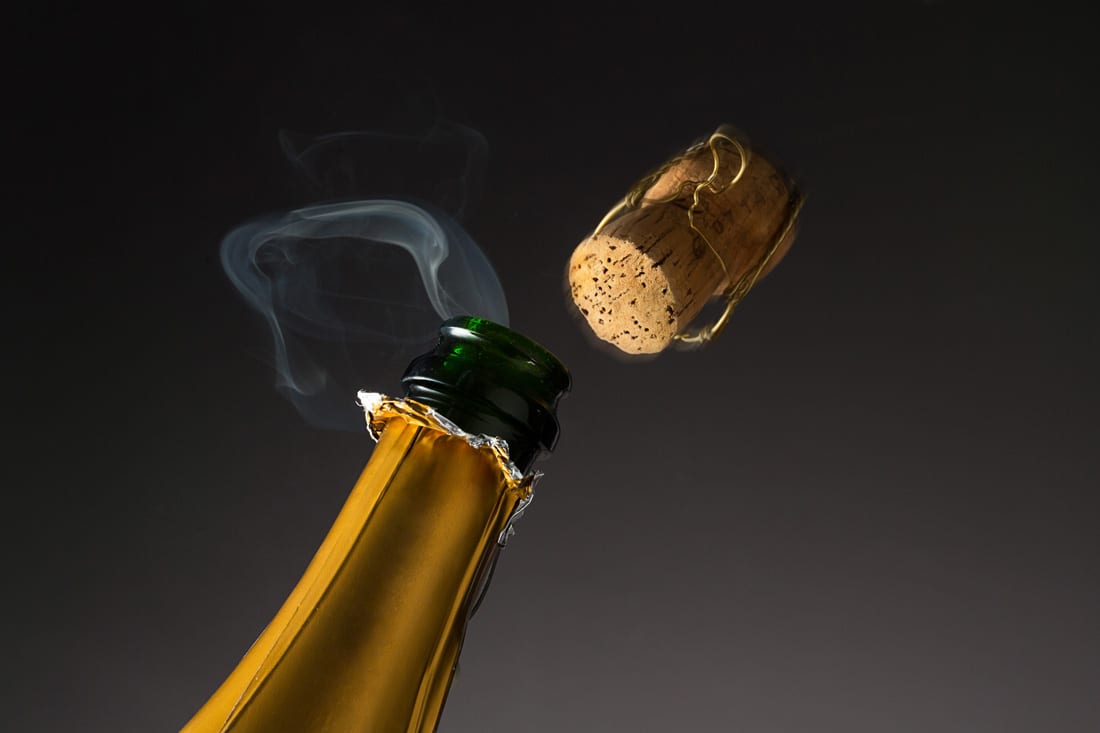Every time you open a bottle of Champagne, it’s a celebration.

The very mention of the word conjures up images of ship sendoffs, toasts, promotions and romance. Yet perhaps because they drink it so infrequently, many know virtually nothing about this wine, its fizzes and its inherent elegance. If you’re going to invest in some bubbly, you might as well be properly prepared. We took the mystery out of the bottle so you can be a bona fide expert this holiday season, when Champagne consumption is at its highest.
WHAT CONSTITUTES CHAMPAGNE
All Champagne is sparkling wine, but not all sparkling wine is Champagne. To be called Champagne, it has to come from the region of Champagne in northeast France, about 125 miles from Paris.
WHAT IT’S MADE FROM
Champagne can only be made from a specific variety of seven grapes, though most are made from just three: pinot noir, pinot meunier and chardonnay. The four less-frequently used grapes are pinot blanc, petit meslier, petit arbanne and fromenteau.
BUBBLES
The bubbles come from a simple formula of fermentation (sugar + yeast = alcohol + CO2) and not allowing the resulting gas to escape the bottle. The yeast eats the sugar, which causes Champagne’s effervescence. Small bubbles are a sign of a high-quality wine.
OPENING A BOTTLE
Unless you’re a Formula 1 driver who’s just won the Grand Prix, it’s customary to open Champagne without spraying your guests. Remove the foil and wire cage. Hold the cork while twisting the bottle slowly to ease it out with a sigh. This shows your worldly sophistication and prevents eye injuries.
SERVING CHAMPAGNE
For the best flavor and aroma, chill Champagne to around 45 degrees, which translates to approximately three hours in the fridge or 30 minutes in a sink or bucket of half ice and half water. Never try to quick cool it in a freezer. The shape of the glass and the cold temperature preserve the bubbles and enhance the experience. While flutes are popular because they showcase the tiny, rising bubbles perfectly, most Champagne houses and sommeliers prefer tulip-shaped white wine glasses. But flutes look pretty posh for clinking glasses. Pour your Champagne at a 45-degree angle so the liquid doesn’t foam out. Fill glasses two-thirds full. One bottle should fill six to seven flutes.
STYLES OF CHAMPAGNE
Blanc de Blanc: White Champagne made exclusively from white grapes, usually chardonnay.
Blanc de Noir: White Champagne made exclusively from dark-skinned grapes. A gentle press removes juice from skins before any color leaks out.
Rosé: A pink version of Champagne, most often made by the blending of a little red wine with white wine.
Champagne is the only appellation in France allowed to blend red and white wines together. Rosé Champagne can also be made with the saignée method, which involves macerating juice on the grape skins in order to impart color.
CLASSIFICATIONS OF CHAMPAGNE
The amount of sugar in a Champagne’s “dosage” defines its technical level of sweetness. (G/L = grams/liter dosage added.)
Brut Nature: bone dry with zero or up to 2 G/L
Extra Dry: very dry with up to 6 G/L Brut: very dry with up to 15 G/L
Extra Sec: dry with 12-20 G/L Sec: medium dry with 17-35 G/L
Demi Sec: sweet with 35-50 G/L
Doux: very sweet with 50+ G/L
GLOSSARY
Grower Champagne: Champagne grown and bottled by a single estate from its own vines.
Jeroboam: A three-liter bottle equal to four standard bottles of Champagne.
Muselet: The wire cage on Champagne bottles.
Terroir: The identity and character of a wine imparted by the influence of place, including soil, climate, topography and anything else that could have an effect on the grapes.
WHERE TO BUY
Peachtree Road Liquor Store
1895 Peachtree Road N.E.
Atlanta 30309
404.355.4990
peachtreeroadliquor.com
Tower Beer, Wine & Spirits
2161 Piedmont Road N.E.
Atlanta 30324
404.881.0902
buckhead.towerwinespirits.com
STORY: Angela Hansberger









